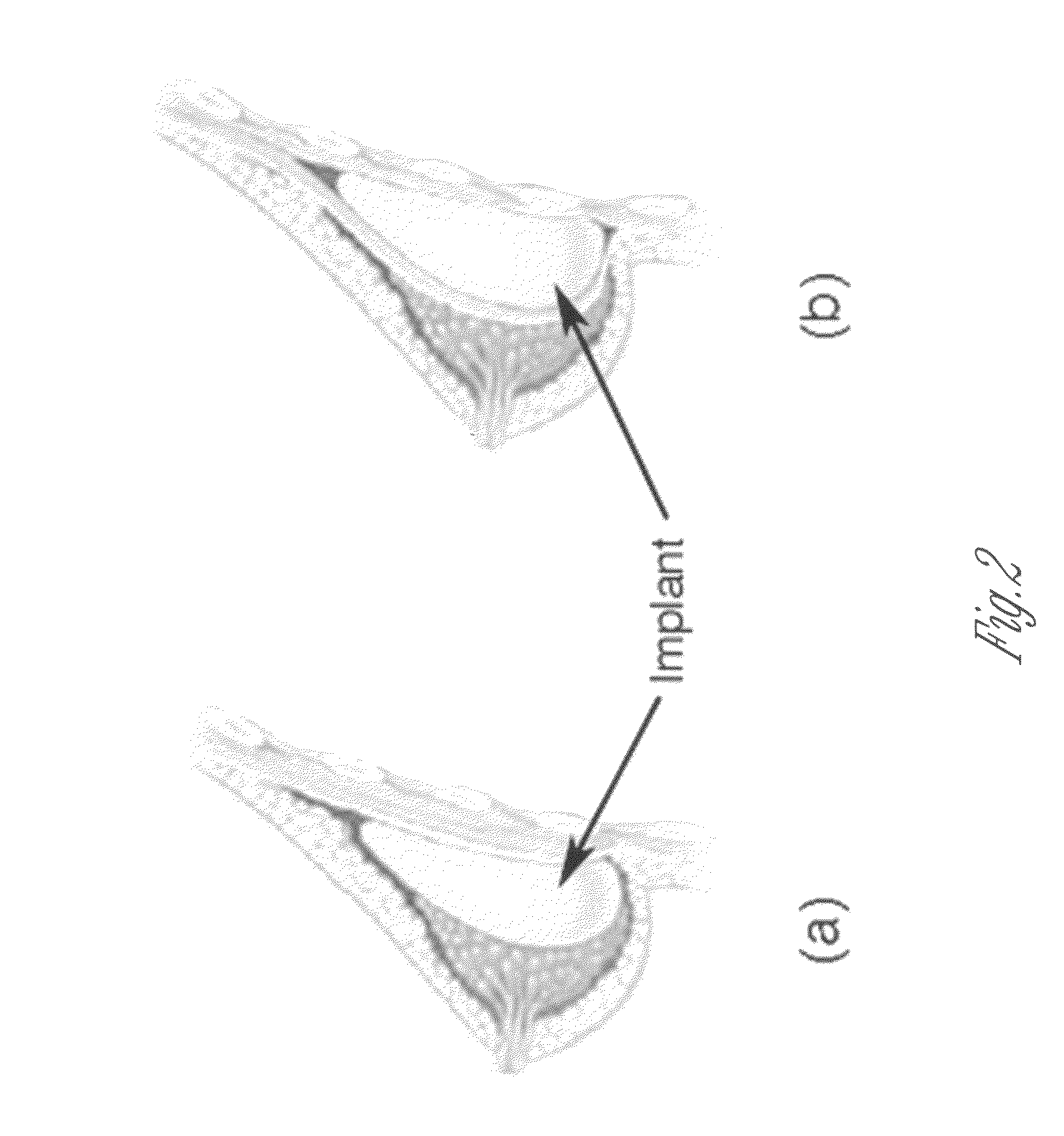Compositions for breast implant filling and methods of use
a technology for filling compositions and breast implants, applied in the field of filling compositions for soft tissue implants, can solve the problems of implants necessitating additional surgery, silicone gel-filled implants have a tendency to leak, implants are unstable and the immune system is unstable,
- Summary
- Abstract
- Description
- Claims
- Application Information
AI Technical Summary
Benefits of technology
Problems solved by technology
Method used
Image
Examples
example 1
Formulation of Breast Implant Filling Materials
[0045]A block co-polymer of PEO-b-PPO-b-PEO and sodium hyaluronate (SH) are solutionized in a deionized water at an ambient temperature. The block co-polymer is a hydrogel, which interact physically in-situ forming a gel. The SH is added for enhancing the physical properties. It was determined that the in-situ gelling system consisting of 15% to 20% (w / v) of the block co-polymer plus 0.8% (w / v) if SH in deionized water would be the most suitable for our purpose.
example 2
Liquid-gel Transition Temperature Determination by Viscometer
[0046]Liquid-gel transition temperatures were determined by measuring the viscosity at a shear=rate of 1 sec−1 using a viscometer. There was a drastic change in viscosity by varying temperature indicating a liquid-gel transition behavior as shown in FIG. 3. As the amount of block co-polymer increased from 15%, 17%, and 20% (w / v), the gel forming temperatures increased to 22° C., 26° C., and 33° C. respectively.
example 3
Liquid-gel Transition Temperature Determination by Refractometer
[0047]The refractive index was measured for the same polymer solutions by varying temperatures as shown in FIG. 4. The refractive index increased at a higher concentration of the polymer solution, but it was difficult to determine the solution-gel transition temperature for each solution as in the viscosity measurement due to the very small changes in refractive index.
PUM
| Property | Measurement | Unit |
|---|---|---|
| temperature | aaaaa | aaaaa |
| temperature | aaaaa | aaaaa |
| temperature | aaaaa | aaaaa |
Abstract
Description
Claims
Application Information
 Login to View More
Login to View More - R&D
- Intellectual Property
- Life Sciences
- Materials
- Tech Scout
- Unparalleled Data Quality
- Higher Quality Content
- 60% Fewer Hallucinations
Browse by: Latest US Patents, China's latest patents, Technical Efficacy Thesaurus, Application Domain, Technology Topic, Popular Technical Reports.
© 2025 PatSnap. All rights reserved.Legal|Privacy policy|Modern Slavery Act Transparency Statement|Sitemap|About US| Contact US: help@patsnap.com



